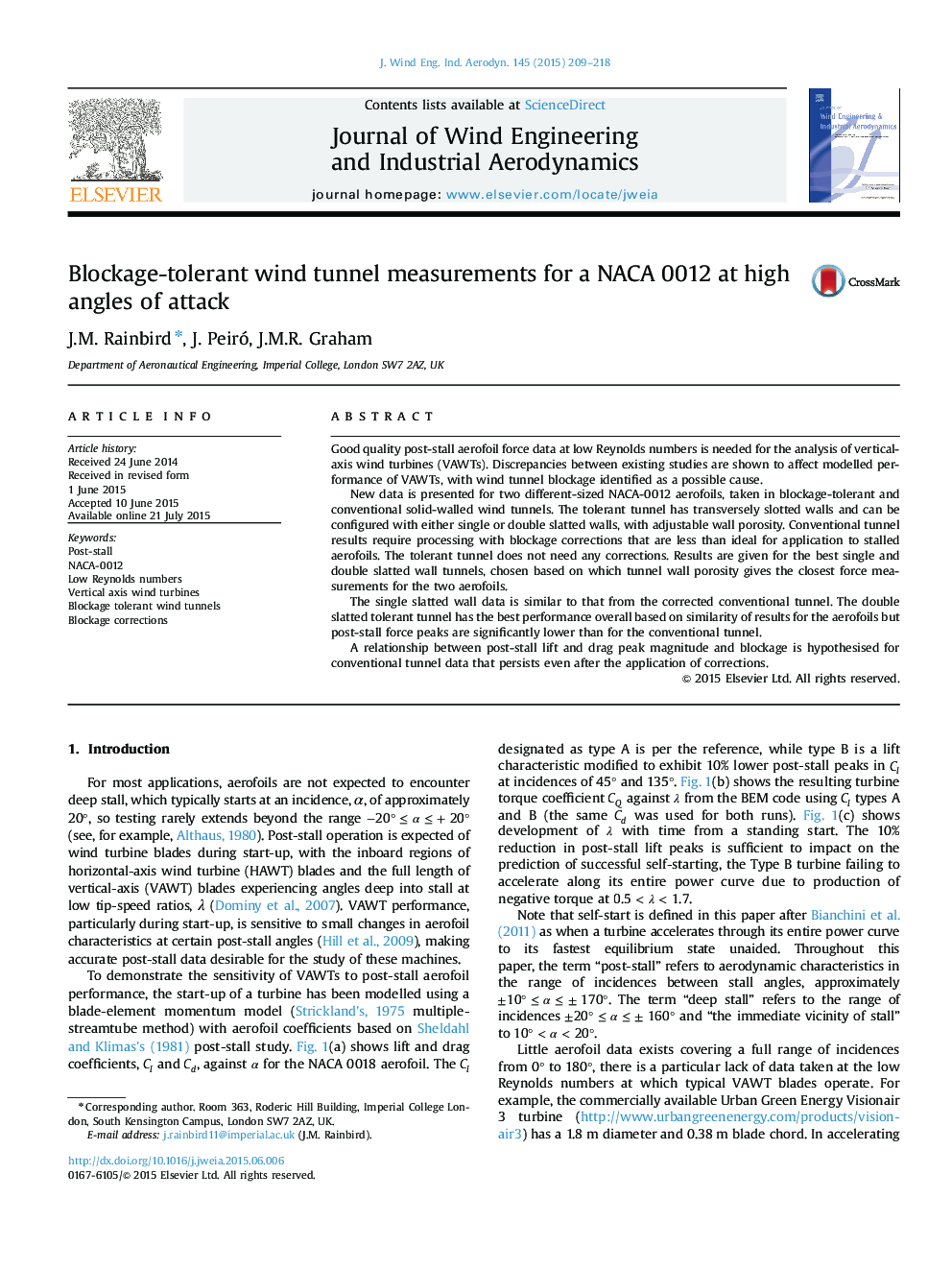| Article ID | Journal | Published Year | Pages | File Type |
|---|---|---|---|---|
| 293256 | Journal of Wind Engineering and Industrial Aerodynamics | 2015 | 10 Pages |
•Existing post-stall data is demonstrated to be too inaccurate for VAWT analysis.•Two NACA-0012 aerofoils are tested through 180° of incidence.•A blockage tolerant and a conventional wind tunnel test section are used.•Conventional tunnel data requires blockage corrections unsuited to extensively separated flow.•The tolerant tunnel raw data does not need corrections.
Good quality post-stall aerofoil force data at low Reynolds numbers is needed for the analysis of vertical-axis wind turbines (VAWTs). Discrepancies between existing studies are shown to affect modelled performance of VAWTs, with wind tunnel blockage identified as a possible cause.New data is presented for two different-sized NACA-0012 aerofoils, taken in blockage-tolerant and conventional solid-walled wind tunnels. The tolerant tunnel has transversely slotted walls and can be configured with either single or double slatted walls, with adjustable wall porosity. Conventional tunnel results require processing with blockage corrections that are less than ideal for application to stalled aerofoils. The tolerant tunnel does not need any corrections. Results are given for the best single and double slatted wall tunnels, chosen based on which tunnel wall porosity gives the closest force measurements for the two aerofoils.The single slatted wall data is similar to that from the corrected conventional tunnel. The double slatted tolerant tunnel has the best performance overall based on similarity of results for the aerofoils but post-stall force peaks are significantly lower than for the conventional tunnel.A relationship between post-stall lift and drag peak magnitude and blockage is hypothesised for conventional tunnel data that persists even after the application of corrections.
